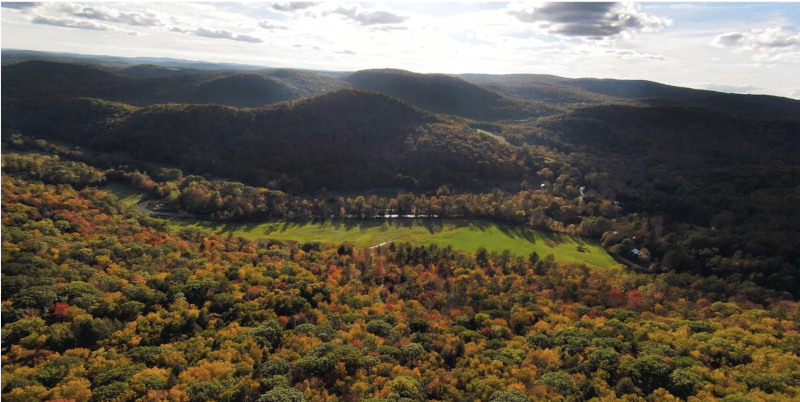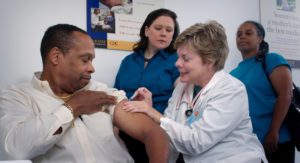Blog
Hard Choices: Herbicides, Ecology, and Conservation Amidst Climate Change
May 11, 2023

“We know which species are already troublesome, and we know about others that are likely to become widespread and disruptive, but there are not enough conservation professionals alone to combat the existing problems or head off new invasions. Hope for our biodiversity lies in a new stewardship ethic among the public, volunteers, and all people interested in the outdoors.”
Nearly every day, for 30 years now, I have done something to protect and restore the meadowland that graces my home. Starting from the abstract principles of sustainability and the pursuit of environmental justice, to active intervention, I now see endangered birds returning to nest in the marshes, and beavers wading in a pool they created overnight.
But while environmental stewardship is often a joy, it can also force hard choices. To preserve my land, I have permitted hunting, destroyed flora, and, yes, used herbicides. Sometimes, man-made solutions are the only way to rectify man-made damage. But my partners in the environmental justice movement, my friends, and my neighbors often oppose these solutions out of distrust and personal revulsion, rather than trying to understand good science. And the science is clear and unambiguous: Good ecological stewardship sometimes requires the strategic use of herbicides. Yet, a great many people who love the land, fields and forests, will not take the actions needed to protect them.
What does ecological stewardship demand of us?
The Threat of Invasive Plants
According to the U.S. Forest Service, “Invasive species are one of the most critical problems facing our natural communities. In fact, nearly half the species currently listed under the Endangered Species Act are threatened by invasive species, and invasive species are now considered the second most serious threat to biological diversity after habitat destruction.”
Invasive species already outcompete and out-reproduce native species, and as the climate warms, the proverbial deck will be stacked even more in their favor. The scale of the problem is difficult to overstate. The State of Vermont Agency of Natural Resources writes, “The second greatest threat to biodiversity, in Vermont and across the world, is the proliferation of invasive species.”
If we do nothing, we will continue to lose forests, meadows, and arable soil to invasive species.
Managing Invasive Plants
There’s no single way to control or eliminate all invasive plants in all environments, but in most cases, the options are either mechanical removal, chemical treatment, or a combination of both.
Mechanical removal can be effective for some invasive species, but it has two major limitations: vegetative propagation and scale.
Vegetative propagation occurs when parts of a plant, Japanese knotweed for example, grow into another plant. When knotweed is cut down or ripped out of the ground, new stands of knotweed can emerge from small pieces of the removed plant’s stem and rhizomes. So by removing knotweed and hauling it off, landowners unknowingly spread it to new locations. Several other invasive species can also be spread through vegetative propagation.
Japanese knotweed is also a good case study to illustrate the problem of scale. Since its introduction into the U.S. sometime in the 1800s, Japanese knotweed has spread to 37 states, and it is but one of many aggressive new species displacing native plants. This plant’s roots and rhizomes typically grow six feet deep and can extend up to 65 feet away from the plant. Consider the difficulty of removing one plant with a root structure of this magnitude — let alone millions of them spread over thousands of acres. It simply isn’t feasible.
Chemical control, then, is the only option left.
Herbicide Application
Herbicides are among the most effective and resource-efficient tools to treat invasive species, but they are potentially damaging to native species, especially when used in large-scale agricultural applications.
It’s important to clarify the distinction between the agricultural use of herbicides and what I’m advocating for:
Large-scale agricultural use of glyphosate can take several forms, but two of the most common use cases are:
- Spraying fields to kill all vegetation before planting crops
- Spraying herbicides over genetically modified crops that are resistant to the effects of the herbicides. (This is how herbicides end up in our food.)
I do not support either of these practices, and I would never allow either of these weed control methods to be used on my land.
What I do support is the targeted, selective spraying of invasive plants with effective herbicides. Rather than broadcasting the herbicides over dozens or hundreds of acres per treatment, this approach typically involves a tractor with a boom sprayer or even a person with a hand-held pump sprayer. Doing so releases much less herbicide into the environment, and the chemicals are only being applied to plants that need to be removed.
Glyphosate
There are only a few herbicides that are effective at controlling the most aggressive invasive species. Glyphosate, the active ingredient in Roundup®, is the primary option for most landowners. It is effective, readily available, affordable, and is inactive in the soil.
According to the Vermont Department of Environmental Conservation and other reliable sources, glyphosate “does not negatively impact insects, mammals, or birds” when used in low concentrations. The following organizations have confirmed the safety of responsibly using glyphosate:
- U.S. Environmental Protection Agency
- U.S. Food and Drug Administration
- Vermont Agency of Agriculture, Food & Markets
- Government of Canada
Now, I don’t like using glyphosate. I’m an environmentalist; I would avoid all herbicides if I could. But cutting most shrubs doesn’t stop them from growing back. A few ounces of herbicide per acre of land is a safe means of preserving the natural environment. If I’m serious about preserving the functioning ecosystem of my land, it’s an effective tool I can rely upon.
When science discovers new herbicides and control strategies for dealing with invasives, I will certainly consider and adopt them as appropriate. For now, however, rather than debating and speculating about the side effects of glyphosate, we should continue to follow the science and use the tools we have — while there is still meaningful biodiversity left to protect.
It Takes a Village
The U.S. Forest Service warns that “The remaining open lands, protected in forest preserves and parks, bear little resemblance to their original wild state. We are a part of nature, and we need to make sure we act in such a way that the rest of nature thrives even in the presence of abundant human activity. If we do nothing, we will continue to let the land deteriorate, and whole native plant and animal communities could disappear — which means a loss of biodiversity and potentially extinction.”
It’s going to take a coordinated effort among many neighboring landowners to slow down the surge of invasive species. If I’m the only person in our community who kills the weeds, it won’t do much good. However, if groups of landowners coordinate their efforts and pool resources, we may have a chance to save our meadows and forests.
Trust in Data
An unwillingness to use herbicides on a limited basis to protect native landscapes can be rooted in pessimism and fear. Can we effectively solve complex problems of our own making without causing worse consequences? I believe as we continue to better understand problems, we can better solve them: Data is the solution. As the CEO of Green River, I am committed to advancing data-driven decision-making and using science and technology to contribute to a sustainable world. Just as my company builds tools to demonstrate the efficacy of public health interventions (like, for example, COVID vaccinations), I believe data should guide our approaches to solving ecological problems. It is imperative that we all prioritize the use of available science to inform our practices for more effective decision-making, especially in places that will ultimately affect us all.
– Michael B. Knapp, PhD Strategic Advisor & Founder
Green River
Case Studies

SOHA
Collecting and analyzing public housing and rental assistance data for the Commonwealth of Massachusetts.

Education Resource Strategies (ERS)
Improving urban school systems through the innovative orchestration of resources

Reach Out and Read
Advocating for childhood literacy

State of Delaware – My Healthy Community
Empowering residents and medical professionals with comprehensive, up-to-date, and actionable public health and COVID-19 data

Housing Navigator Massachusetts, Inc.
Simplifying the search for income restricted rental units in Massachusetts

Global Real Estate Sustainability Benchmarks (GRESB)
Transforming the real estate investment market in favor of sustainable performance
